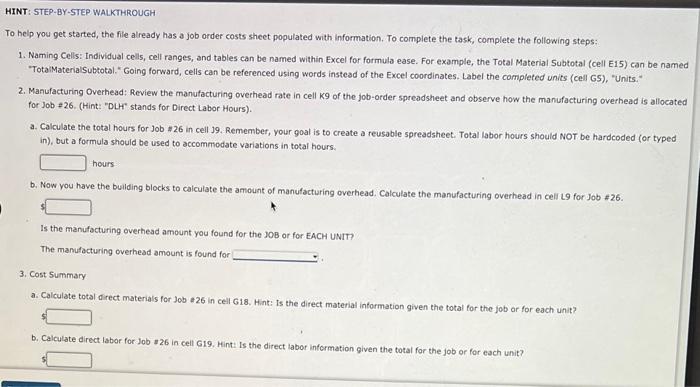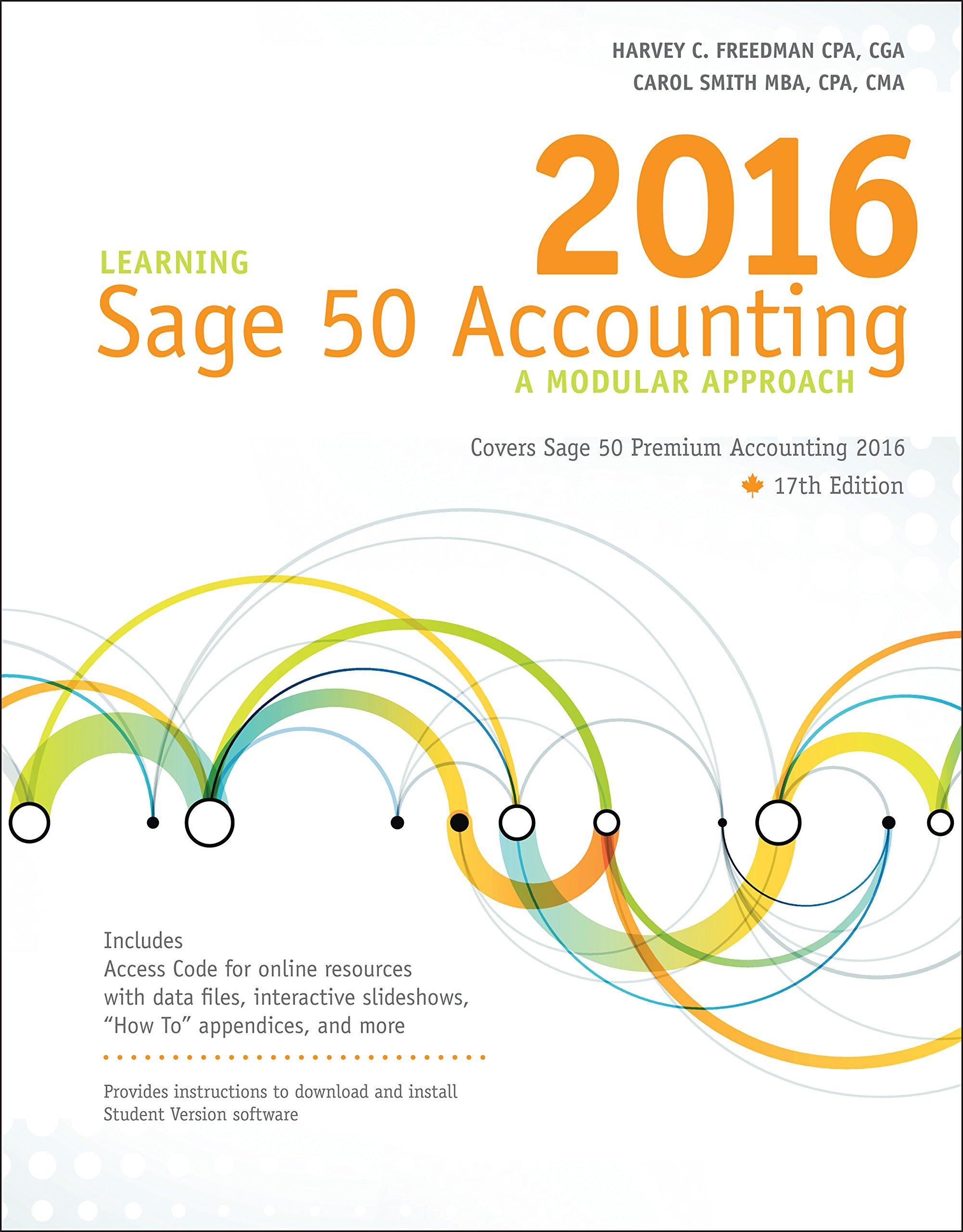please help!

Case scenario: You are working at a manufacturing plant. You do not have the specific identification of the good sold. You are given the building blocks of cost flabor, materials, etc.) for Job $26, which your plant completed. Your company accumulates cost per job on a Job-Order Sheet. Required: Download spreadsheet JobOrderCaseData-7e2c3b.xlsx Build a spreadsheet to calculate a manufacturing job's total cost and unit product cost. This lab uses "job A 26 information. HINT: STEP-BY-STEP WALKTHROUGH To help you get started, the file already has a job order costs sheet populated with information. To complete the task, complete the following steps: 1. Naming Cells: Individual cells, cell ranges, and tables can be named within Excel for formula ease. For example, the Total Material Subtotal (ceil Eis) can be named "TotalMaterialsubtotal. " Going forward, cells can be referenced using words instead of the Excel coordinates. Label the campleted units (cell G5), "Units." 2. Manufacturing Overhead: Review the manufacturing overhead rate in cell Kg of the job-order spreadsheet and observe how the manufacturing overhead is allocated for Job * 26. (Hint: "DLH" stands for Direct Labor Hours). a, Calculate the total hours for 30ba26 in cell 39 . Remember, your goal is to create a reusable spreadsheet. Total labor hours should NOT be hardcoded (or typed in), but a formula should be used to accommodate variations in total hours. hours b. Now you have the building blocks to calculate the amount of manufacturing overhead. Calculate the manufacturing overhead in cell 19 for Job 226 . To help you get started, the file already has a job order costs sheet populated with information. To complete the task, complete the following steps: 1. Naming Cells: Individual cells, cell ranges, and tables can be named within Excel for formula ease. For example, the Total Material Subtotal (cell E15) can be name "TotalMaterialSubtotal. "Going forward, cells can be referenced using words instead of the Excel coordinates. Label the cormpleted units (cell GS), "Units." 2. Manufacturing Overhead: Review the manufacturing overhead rate in cell kg of the job-order spreadsheet and observe how the manufacturing overhead is allocate for Job =26. (Hint: "DLH" stands for Direct Labor Hours). a. Calculate the total hours for Job $26 in cell J9. Remember, your goal is to create a reusable spreadsheet. Total labor hours should NOT be hardcoded (or typed in), but a formula should be used to accommodate variations in total hours. hours b. Now you have the bulding blocks to calculate the amount of manufacturing overhead. Calculate the manufacturing overhead in cell 29 for Job $26. Is the manufacturing overhead amount you found for the JOB or for EACH UNIT? The manufocturing overhead amount is found for 3. Cost Summary a. Calculate total direct materials for Job 26 in cell 618 . Hint: Is the direct material intormation given the total for the job or for each unit? b. Calculate direct labor for Job 26 in cell G19. Hint: Is the direct labor information given the total for the job or for each unit? c. Calculate manufacturing overhead for Job #26 in cell G20. Do not hard-code. d. Calculate the total costs for Job #26 in cell G21. e. Calculate the unit product cost for Job #26 in cell G22. 4. Reflect on your calculation process to further understand cost concepts. a. How does manufacturing overhead differ from direct materials and direct labor? Manufacturing overhead is cost, not costs, associated with manufacturing. It requires analyzation of total costs, a rational method of allocating the cost, and a rate. This differs from direct material and labor because those costs traceable outright to producing a unit. b. What variable(s) does direct labor depend on? What variable(s) do direct materials depend on? What variable(s) does manufacturing overhead depend on? c. What information can you gleam from the job-cost spreadsheet? What is the most expensive part of the job? least expensive? is the most expensive part of manufacturing this job. It accounts for about % of the job's cost. The least expensive part of this manufacturing job is It is about % of the fob's cost. 5. Explain how job cost sheets are used to evaluate and control costs. The input in the box below will not be graded, but may be reviewed and considered by your instructor












